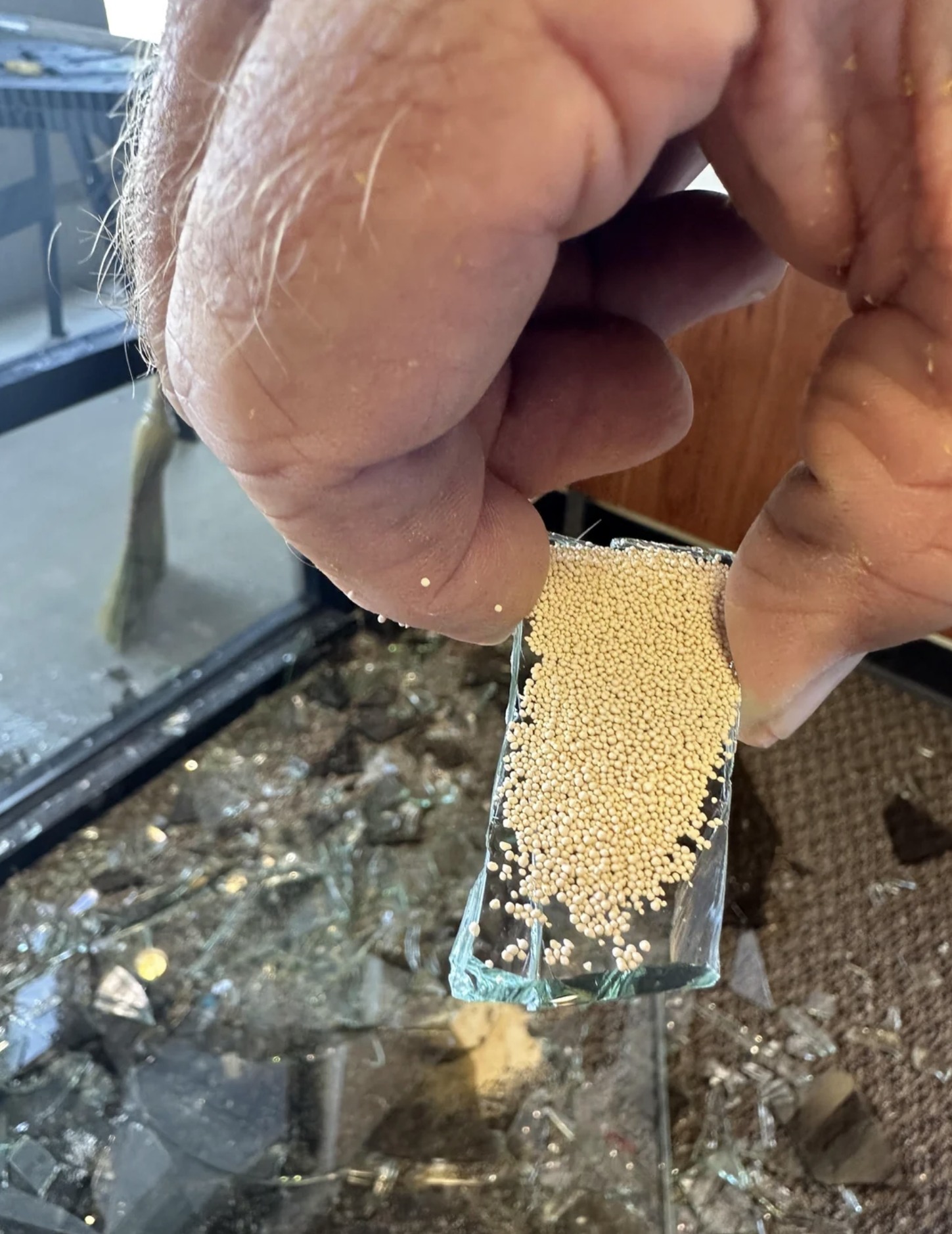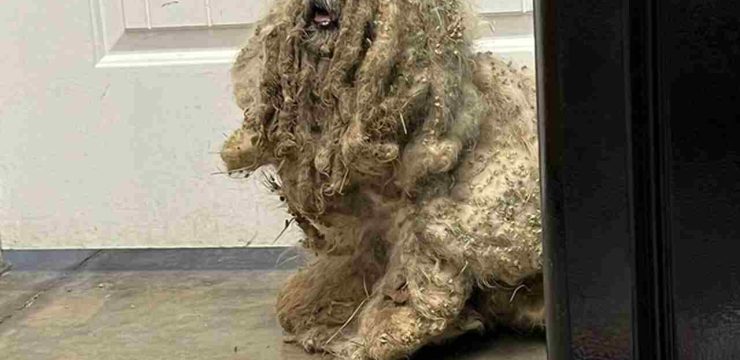When my wife’s office was burglarized, we braced ourselves for the obvious aftermath—shattered glass on the floor, missing items, and the general chaos that comes with a break-in. What we didn’t expect, however, was the strange sight of dozens of tiny cream-colored beads scattered across the carpet, mixed in with the shards of broken glass.

They looked almost like millet seeds or some kind of small grain, and they were spread out in clusters, glinting faintly under the overhead lights. The police officers who arrived to investigate were just as puzzled as we were. They examined the beads, turning them over in their hands, but no one could say exactly what they were. Out of caution, we handed everything over to them—both the glass and the beads—just in case they were connected to the burglary in some unusual way. For a short while, it felt like we had stumbled across a curious mystery in the middle of an otherwise unfortunate event.
It wasn’t until later that we learned there was nothing sinister or particularly mysterious about them at all—they were simply a part of the broken window itself. Modern insulated, or dual-pane, windows are designed with a slim metal spacer sandwiched between the two layers of glass. Inside that metal spacer are moisture-absorbing pellets known as desiccant beads. Their sole purpose is to prevent condensation from forming between the panes by soaking up any moisture that makes its way inside.
That’s exactly what had ended up all over the floor in my wife’s office. When the burglar smashed the front window with a rock, the impact didn’t just shatter the glass—it also ruptured the metal spacer frame holding those desiccant beads in place. With the spacer split open, the beads spilled out, some clinging to the jagged edges of the glass while others rolled freely across the carpet. They weren’t dropped by the thief or part of some strange warning—they were just an overlooked component of the window’s construction, now scattered in plain view because of the break-in.
Dual-pane windows are built to improve insulation by sealing the space between the two layers of glass. Over time, however, the seals can wear down, allowing moisture to seep into the cavity. If left unchecked, that moisture can cause fogging, cloudiness, or even mold between the panes. This is where the desiccant beads come in. Sitting quietly inside the metal spacer, they absorb any incoming moisture, keeping the glass clear and dry. Common materials used for these beads include silica gel, zeolite, and molecular sieves—each effective at trapping moisture without releasing it back into the air.
While these beads are non-toxic, they aren’t something you’d want children or pets to swallow, so cleaning them up quickly is important if a window ever breaks. Seeing them outside of their usual hidden position is rare, and unless you’re familiar with window construction, it’s easy to mistake them for something entirely unrelated to glass. In our case, their unexpected appearance added a brief layer of intrigue to an already stressful day. Once we understood their purpose, the whole situation made perfect sense. The beads weren’t a clue to the burglar’s identity, nor were they some strange residue left behind as a signature.
They were simply a byproduct of the damage, a reminder that even the most ordinary household materials can surprise you when they’re suddenly out of place. The incident left us with two takeaways: first, that break-ins often have small, unexpected details that grab your attention in the moment, and second, that sometimes those details turn out to be nothing more than the inner workings of everyday objects.
So if you ever come across tiny cream-colored beads scattered alongside broken glass, there’s a good chance you’re looking at the desiccant from a ruptured dual-pane window. And, as a side note for anyone living in central California—if you happen to see someone selling a suspiciously large number of Ray-Ban or Costa sunglasses, maybe drop the police a tip. It might just be connected to the kind of break-in that leaves both glass and mystery beads behind.





